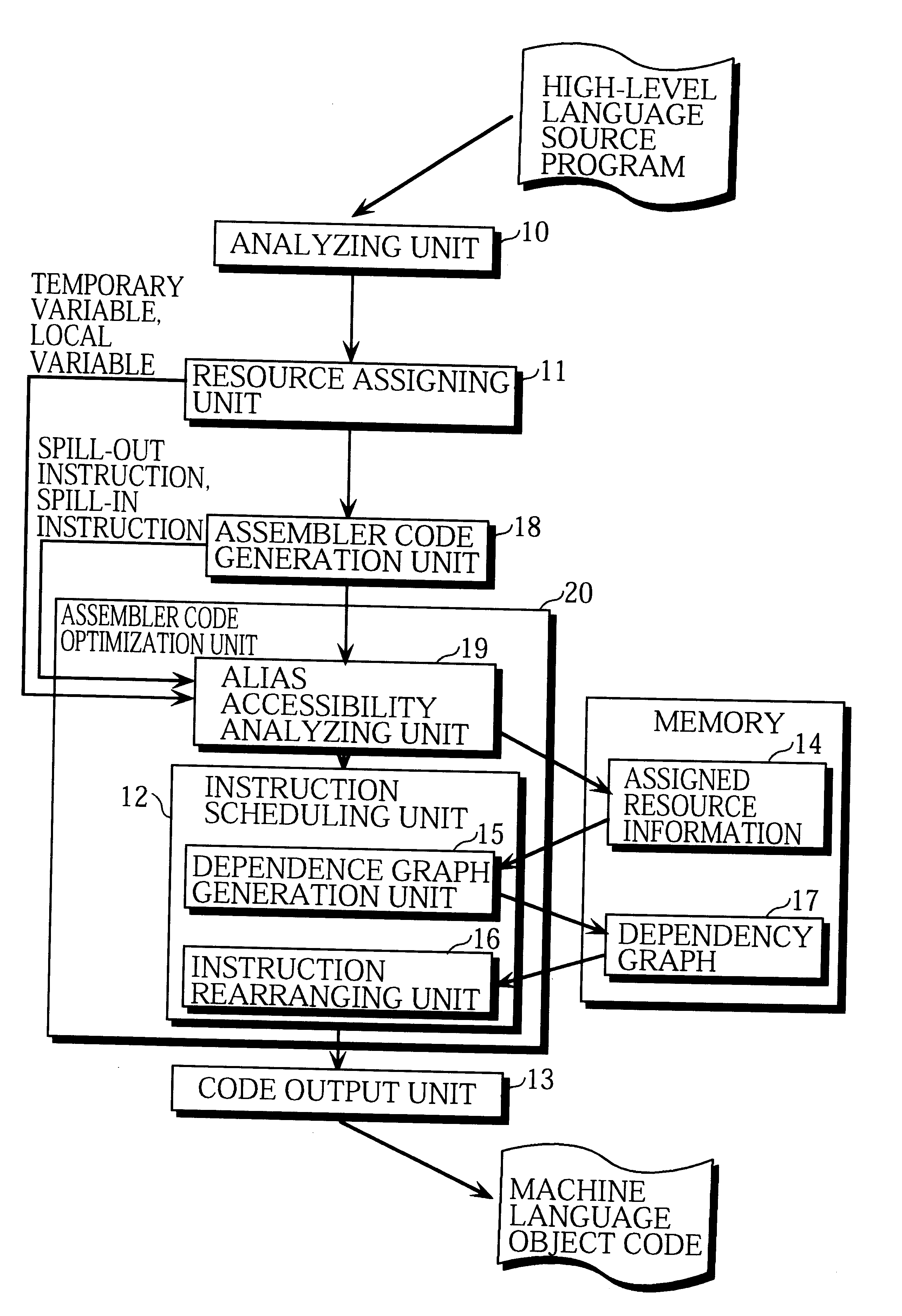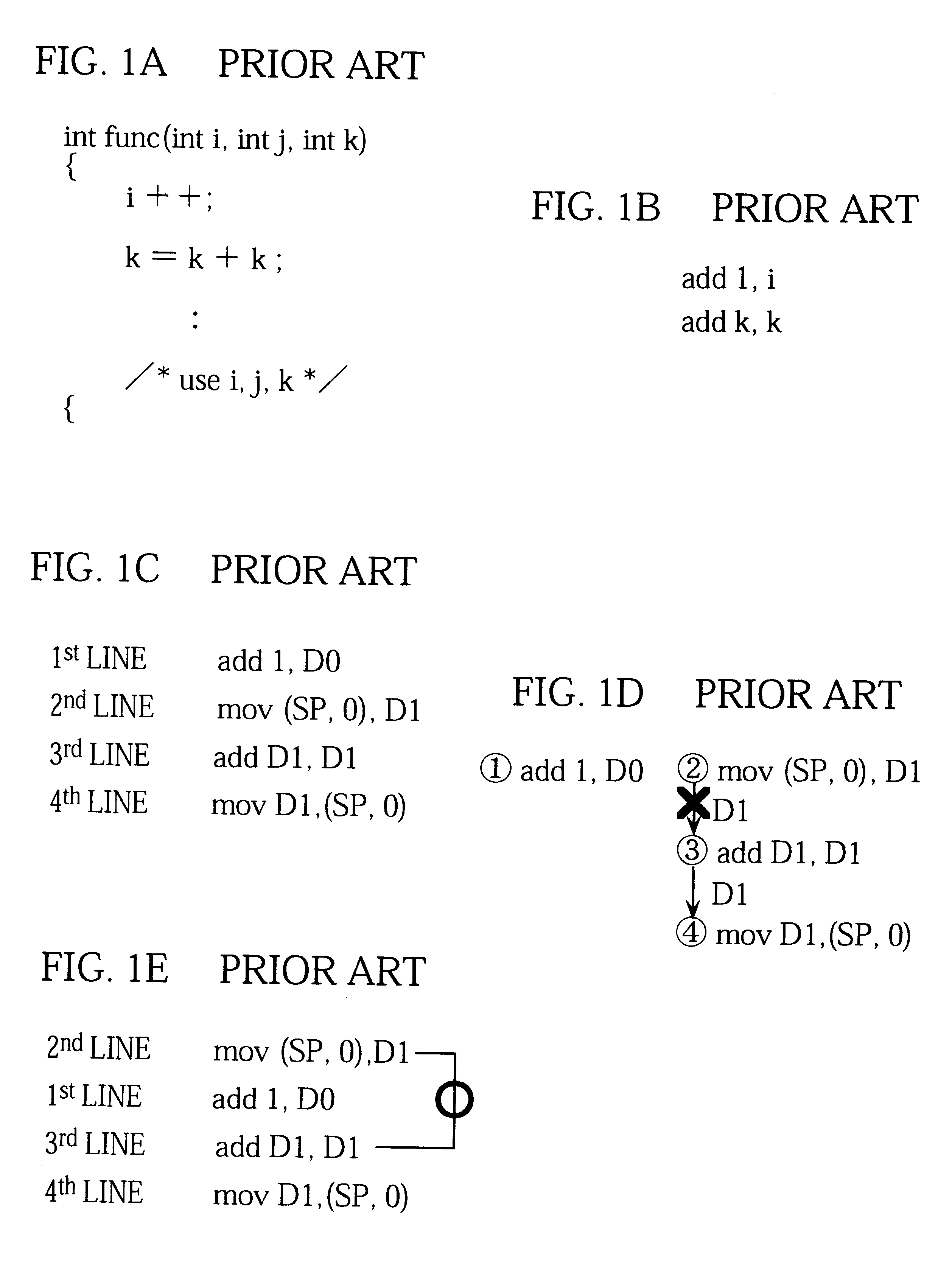Compiler for optimizing memory instruction sequences by marking instructions not having multiple memory address paths
a technology of instruction sequence and compiler, applied in computing, instruments, electric digital data processing, etc., can solve problems such as real risk of algorithm breakdown, execution delay, pipeline gap,
- Summary
- Abstract
- Description
- Claims
- Application Information
AI Technical Summary
Problems solved by technology
Method used
Image
Examples
second embodiment
The second embodiment of the present invention is constructed to delete redundant transfer instructions.
FIG. 12 is a block diagram showing the internal configuration of the compiler of the second embodiment. The configuration of this compiler differs from that in the first embodiment in that the instruction scheduling unit 12 provided in the assembler code optimization unit 20 has been replaced with the equivalent resource transfer instruction optimization unit 22.
The equivalent resource transfer instruction optimization unit 22 is composed of an equivalent resource analyzing unit 25 and an equivalent resource transfer instruction deleting unit 26.
The equivalent resource analyzing unit 25 generates equivalence groups for the instructions within basic blocks, out of the instruction sequences outputted by the resource assigning unit 21. A flowchart for the processing that generates equivalence groups is shown in FIG. 17.
In step c1, the equivalent resource analyzing unit 25 clears the ...
PUM
 Login to View More
Login to View More Abstract
Description
Claims
Application Information
 Login to View More
Login to View More - R&D
- Intellectual Property
- Life Sciences
- Materials
- Tech Scout
- Unparalleled Data Quality
- Higher Quality Content
- 60% Fewer Hallucinations
Browse by: Latest US Patents, China's latest patents, Technical Efficacy Thesaurus, Application Domain, Technology Topic, Popular Technical Reports.
© 2025 PatSnap. All rights reserved.Legal|Privacy policy|Modern Slavery Act Transparency Statement|Sitemap|About US| Contact US: help@patsnap.com



